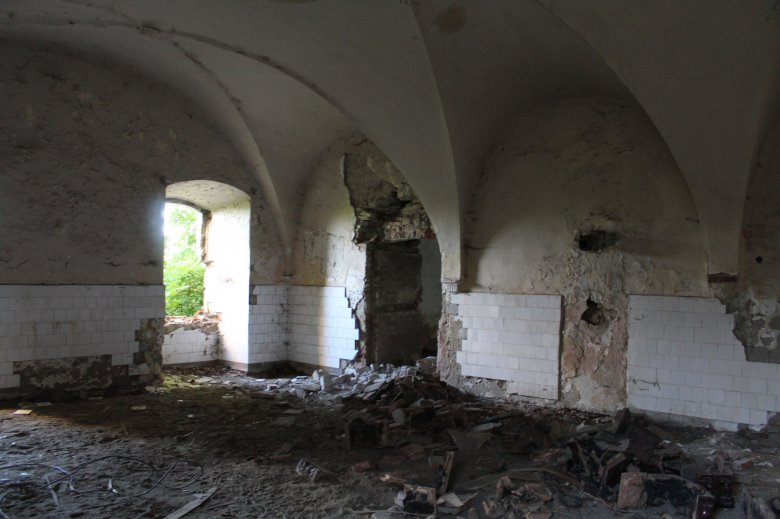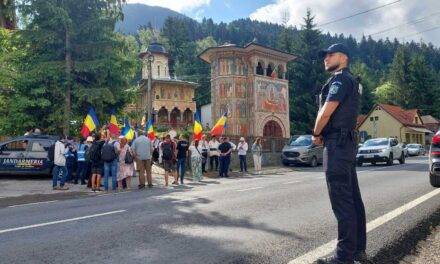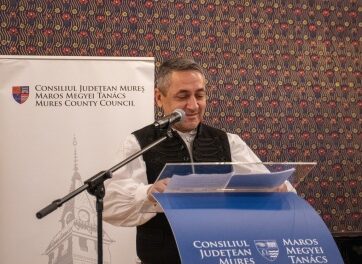The Romanian state sued the building from the Roman Catholic State, and is now cynically letting it rot.
The Renaissance-era Rákóczi Castle in Radnót, Maros County, is an extremely significant monument from the point of view of art history, architectural history, and history, and its condition has been rapidly deteriorating since it returned to the ownership of the Romanian state in 2020.
Lóránd Kiss, a restorer and monument protection specialist, drew attention to the current tragic, decaying state of the building complex. Art historian Lóránd Kiss and Zsolt Kovács, lecturer at the Babeș-Bolyai University, also assessed for Krónika that something should be done urgently to save the castle before it is too late.
The 16th-century Rákóczi Castle, owned by the Romanian state and located in Radnót, Maros county, has fallen into an extremely dilapidated state - drew attention to the restoration and heritage preservation specialist Lóránd Kiss. Lóránd Kiss, who posted a photo-illustrated post on the social media site about the depressing state of the monument, explained to Krónika that since the building complex became the property of the Romanian state in 2020, systematic destruction of monuments has been taking place: people are constantly dismantling and carrying away the elements of the castle.
"I spoke to the public because, as a monument protection specialist, it is my heart to move the case of the castle out of the impasse. In practice, it is one of the most intact Renaissance castles in Transylvania. And he came to the conclusion that in the 21st century, when we live in a world where a pigeon lands on a square and people post it on the Internet, it is possible that the building will be torn apart piece by piece: this is what is happening now in Radnót.
Lóránd Kiss drew attention.
He explained that it is tragic that ten-meter-long, 30-centimeter-diameter beams are cut and carried away: and this cannot be done with a cart or other low-cost methods. About two-thirds of the roof of the north wing has collapsed, the tiles of the collapsed roof structure are weighing down the vaults on the ground floor, and in some places you can see the timber from the demolition, prepared for transport.
"Therefore, a - to put it mildly - complicit lack of interest on the part of the owner can be suspected here. It can be clearly observed that this destruction and demolition is taking place in a systematic and targeted manner: first they tore out the window and door casings on the ground floor, then they did the same on the first floor, and then they started to cut the roof structure apart by cutting the connecting beams - for this they need tools that, say, two a person in need of help cannot perform it with hand tools"
the restorer brushed.
He explained that the roof structure of one wing has already collapsed, and it is only a matter of time - only weeks or months - before the other wings and the other roof structures collapse, because the connecting beams have all been cut and the building will not hold due to the snow and wind. In response to our question, the restorer also said that the castle could still be saved in its current state, but its condition is depressingly tragic.
"The Romanian state, which repossessed the property from the Roman Catholic State, should also take care of managing and taking care of what it repossessed. It is not known whether this destruction is intentional or due to carelessness, but it is desperate how we are becoming a country without memory in the 21st century"
- said Lóránd Kiss.
He emphasized that the case of the destruction of the Radnót castle is not an isolated case, since just by walking along the Aranyos and Maros valleys you can see several decaying monuments: the Aranyosgerend castle has become a ruin in the last ten or so years, but the Kerelőszentpál castle is in a similar state - and these three monuments it is located only in a small area, within a radius of fifty kilometers.
"In addition, it is clearly visible, so they are not in a hidden place, they are seen by passers-by every day, so it cannot be said that they have been forgotten."
"The owners of the Aranyosgerend and Kerelőszentpáli monuments did get them back - but in what condition is another question," the restorer reminded. Speaking about the recent past of the Radnót castle, he recalled that the MS-II monument registered under identification number 15705 was the subject of a restitution lawsuit between the Romanian state and the Roman Catholic State between 2003 and 2020. In 2012, the roof structure of the two towers of the castle burned down due to carelessness, the roof structure of the two towers was rebuilt at the initiative of the Roman Catholic Church and with the help of volunteers, the works were financed by the László Teleki Foundation in Budapest. The Romanian state, through the local government of Radnót, gave its tacit consent to the works.
"I know this because several of you and I volunteered to help in this work as professionals. After all this, the rightful owner of the monument, the state, was not able to take care of its preservation in two years. If there is a person responsible, it is the Romanian state, and if there is no person responsible, then the Romanian state does not exist"
said the specialist.
Art historian Zsolt Kovács, a lecturer at Babeș-Bolyai University, also assessed that the building complex of the Radnót castle is an extremely important Transylvanian monument, so what is currently being experienced is tragic.
"Basically, it is important because Radnót Castle, which was built to its present form in several eras, is one of the outstanding monuments of Transylvanian Renaissance architecture. The regular ground plan with four corner bastions is linked to the constructions of Gábor Bethlen, so it acquired its present appearance during Bethlen's time - at least at the level of its ground plan. A typical late Renaissance floor plan, which can be traced all the way back to Italian Renaissance architecture: it was invented by the great Italian architects"
- emphasized the art historian. He added that the castle is also of great importance because this building is one of the remains of Prince Gábor Bethlen's constructions that has survived in relatively good condition, at least so far, with many Renaissance details: carved stone frames, i.e. door and window frames made of stone, very beautiful arch support brackets , mural decoration from the Renaissance.
"The latter were only just identified by the research, more precisely by Lóránd Kiss, but they have not yet been thoroughly explored. In addition, the wall layer was never researched, so in fact many other details of the former princely castle, even murals, may still be undiscovered. The significance of the building is also enhanced by the fact that not only Gábor Bethlen built here. At the end of the 1640s, due to the death of the prince, his constructions stopped, and then II. György Rákóczi continued. So, in fact, the Radnót castle was one of the most significant princely constructions of the 17th century"
explained Zsolt Kovács.
For this reason, the destruction is a huge exclamation mark, since the relatively intact castle can be said to be a rarity throughout Transylvania, which the Romanian state, as the owner, does not seem to care about at all.
"The building's art-historical significance is huge due to the architectural-historical aspects and even the murals. In addition, its symbolic importance is also great, since the golden age of Transylvania, the XVII. It was an important and, moreover, princely castle during the 19th century principality, where Gábor Bethlen visited and the Rákóczia are also connected to this castle. This call to attention is also important, because we can see that among the Transylvanian castles from this era, unfortunately, there are some that cannot be saved"
said the art historian.
As an example, he mentioned the completely dilapidated castle in Alvinc in the White County.
"The Alvinci has exactly the same regular floor plan, in the last half century, in the '70s, it still had a roof, today it is not possible to save the building. So it is important to draw attention to Lóránd Kiss, because the Radnót castle can still be saved with quick intervention. Steps must be taken to prevent roofs from collapsing. Basically, the local government or the Romanian state should step in here. If they don't act, a part of the castle will become unsalvageable"
- emphasized the art historian.
Source and additional images: KrónikaOnline












